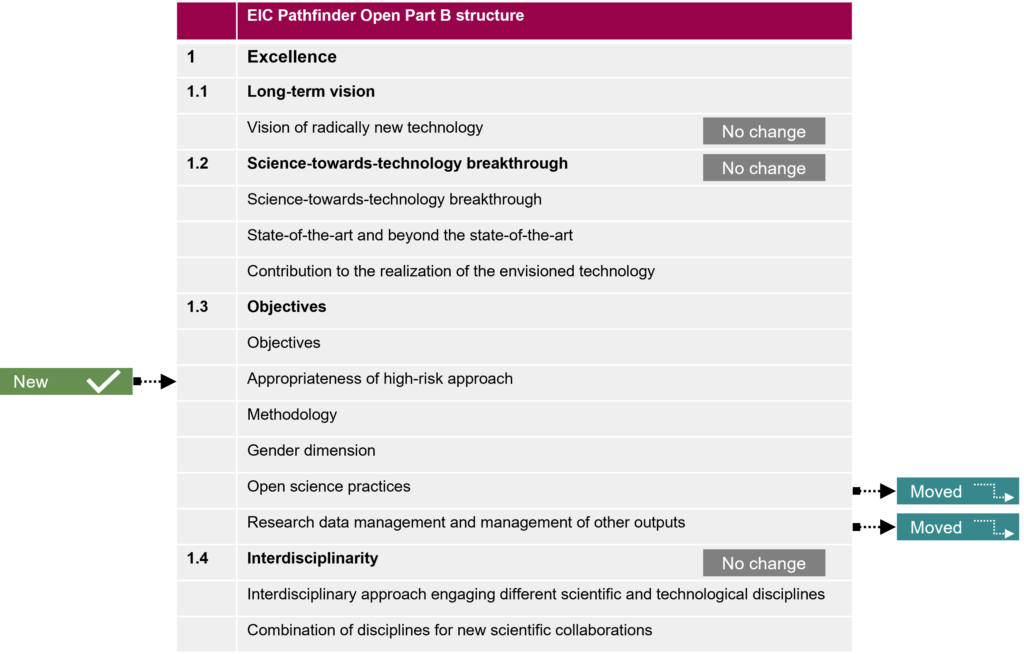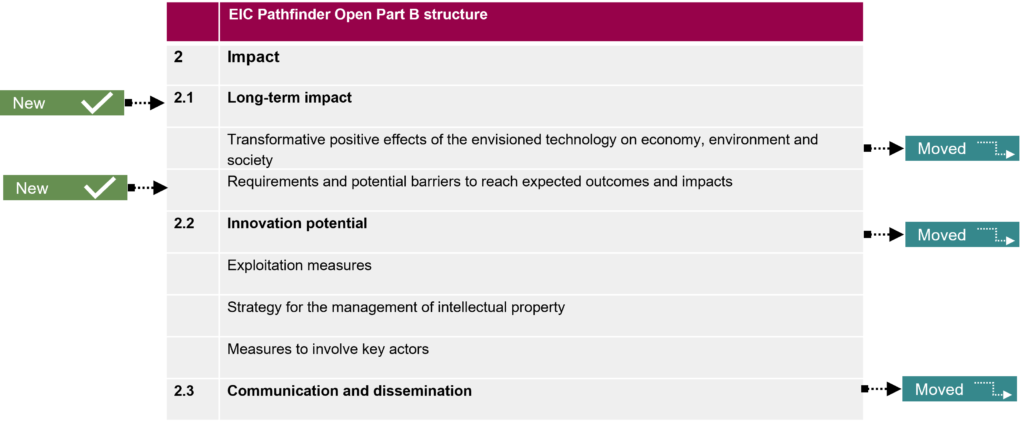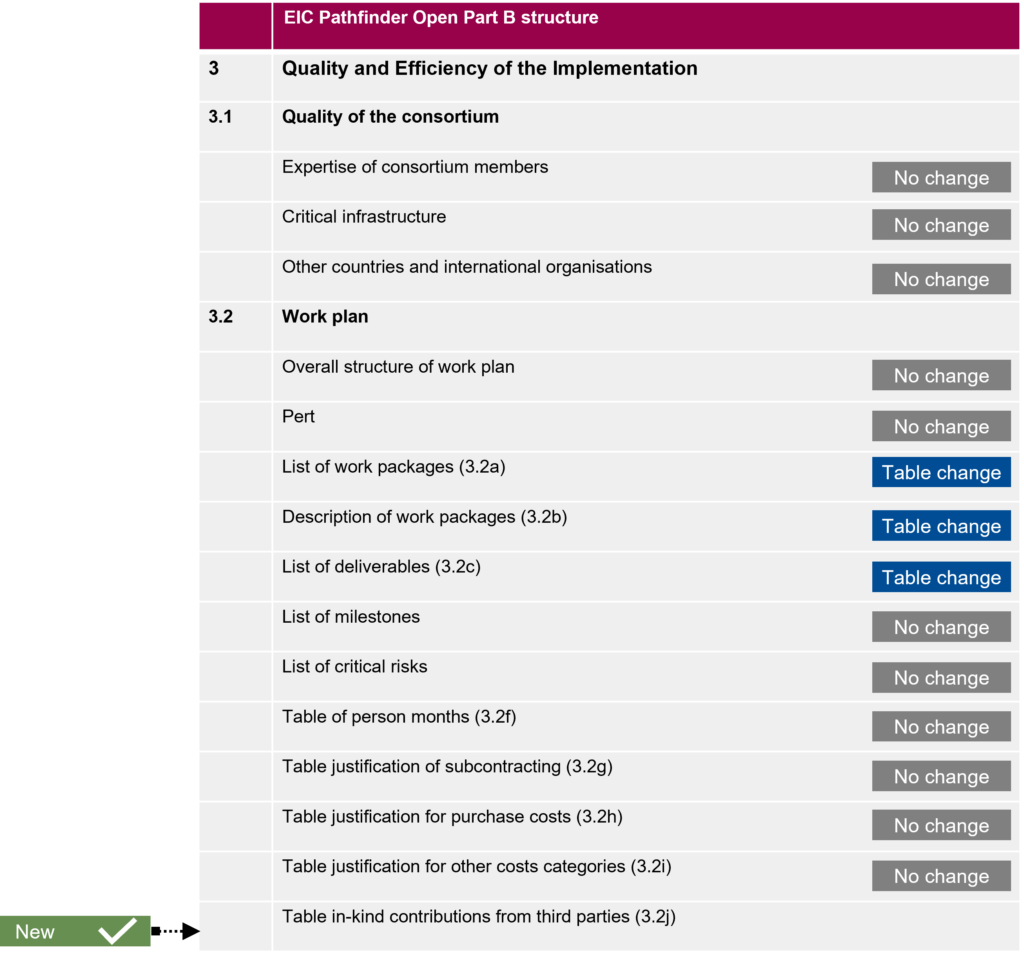EIC Work Programme 2022 published – more changes in the Pathfinder than expected
10th February 2022 at 5:47 pm
The Horizon Europe EIC work programme for 2022 was published earlier this week. As before, it covers the following three funding schemes:
- EIC Pathfinder – for multi-disciplinary research teams to undertake visionary research with the potential to lead to technology breakthroughs.
- EIC Transition – funding to turn research results into innovation opportunities.
- EIC Accelerator – for start-ups and SMEs to develop and scale up high-impact innovations with the potential to create new markets or disrupt existing ones.
In each of these three EIC instruments, applicants can either submit their project proposal on a topic of their interest to the “Open” call (bottom-up) or to the so-called “Challenges”, namely a pre-defined area (top-down). For example, there are six Challenges for the Pathfinder in 2022, including “1) Carbon dioxide and nitrogen management and valorisation, 2) Mid to long term and systems integrated energy storage, 3) Cardiogenomics, 4) Towards the Healthcare Continuum: technologies to support a radical shift from episodic to continuous healthcare, 5) DNA-based digital data storage, and 6) Alternative approaches to Quantum Information Processing, Communication, and Sensing” (source: Work Programme 2022).
The calls for proposals of the three or rather six different instruments vary and so do their proposal submission deadlines. For example, the call for the EIC Pathfinder Open 2022 is expected to open on the EU Funding & Tenders Portal officially on 1 March 2022 with a submission deadline on 4 May 2022. The calls for the Pathfinder Challenge(s) are yet to be published according to our knowledge and should open on 15 June, with a deadline on 19 October 2022. For the planned dates of the other EIC instruments, please check out the EIC Work Programme 2022 website or the EIC factsheet. Based on our experience, a bit less than three months are sufficient to prepare a competitive Pathfinder Open proposal, provided that you already have a specific project idea and your core project partners confirmed.
Changes to the Pathfinder-Open Template – more than meets the eye
Many applicants who got a high score in last year’s call but were not invited for funding will try their luck again this year. We had hoped that the changes to the Part B template would be minimal and the history of changes provided in the document did indeed indicate so. However, a close comparison with the 2021 template revealed some significant changes. If you are planning to re-submit your proposal to the 2022 call, be mindful of the following changes below.
Re-structuring of Excellence and Impact
In Section 1 of the proposal template, the main required sub-headings have not changed. However, there are some significant changes in sections 1.1 Long-term vision and 1.3 Objectives. Interestingly, the description of the transformative positive effect of the new technology should not be described in section 1.1 anymore, but is now covered in the Impact section. Meanwhile, the open science practices and the data management principles to be implemented have moved from the Impact to the Objectives. Section 1.3 should also now explain the appropriateness of the high-risk research approach for achieving the high gain objectives set in the project. It is worth noting, that the gender dimension of the project has now been promoted and should be covered in more detail compared to the 2021 submission.


The Impact section was also adapted significantly. A new sub-heading “2.1 Long-term impact” is now mandatory. While some aspects should have been covered in section 1.1 in the 2021 submissions, it is important to note that the scope of this new section goes clearly beyond what was previously expected.
New tables for the Implementation
Apart from minor changes to the sub-heading titles, the structure of the Implementation section remains the same. However, next to a new mandatory table, “3.2j In-kind contributions provided by third parties”, to be included in section 3.2, some of the well-known mandatory tables have been adapted. The names, surnames and gender of work package (WP) leaders now need to be indicated in the table “List of Work packages”. The layout of the WP description tables has also been changed. Now, the durations, partner numbers and short names, person-months and the deliverable descriptions do not have to be indicated anymore, as these are covered already by other tables. For example, table 3.2c “List of deliverables” now includes a new column to provide a short description of each deliverable.

As always, we recommend to those planning to re-submit their 2021 proposal to carefully read through the new Part B template to make sure that all necessary changes are included.
From FET to the Pathfinder – our track record
While there are more novelties to look out for in the Pathfinder Open than what we have summarised above, we hope these basic yet important highlights will help you avoid last-minute surprises during your proposal preparation.
Since the introduction of the FET programme in Horizon 2020, we have supported the preparation of several successful FET proposals, including Lumiblast, Pre-ART, FRINGE, CLASSY, and SciFiMed. Our success rate is more than 60% in what is known to be one of the most competitive EU research funding schemes to date and we were very pleased to also achieve a successful outcome with CORENET in this very first Pathfinder Open experience. With many years of proposal writing experience, we can support you throughout your application process and during the implementation of your funded Pathfinder Open project, as we are currently doing for CORENET and the FET-Open projects CLASSY, FRINGE , Lumiblast, as well as the FET flagship project macQsimal. Covering the areas of cheminformatics, systems chemistry, cancer therapy and quantum metrology and sensing, these projects are a good representation of our focus areas (Health and the Life Sciences, Energy and the Green Deal) and the breadth of other technology areas in which we have been involved over the years.
For initial information, you may wish to attend the European Innovation Council online Info Day, scheduled for 22 February 2022. If you already have concrete plans or want to get started now, you are welcome to contact us and we can discuss your project idea and proposal. From FET-Open to EIC Pathfinder, our taste for project ideas that are challenging current paradigms stays the same. Have a look at our Proposal Writing services and contact our EIC Pathfinder experts to discuss how we can best support you with your ambitions.

Jacqueline Strehler
Research & Innovation Project Manager

